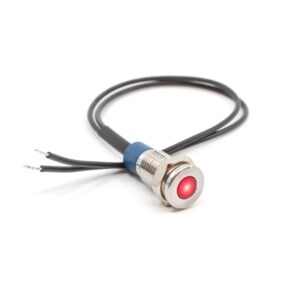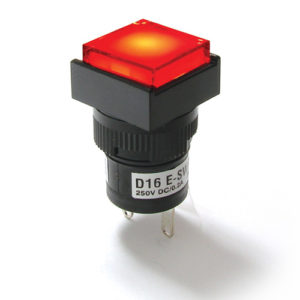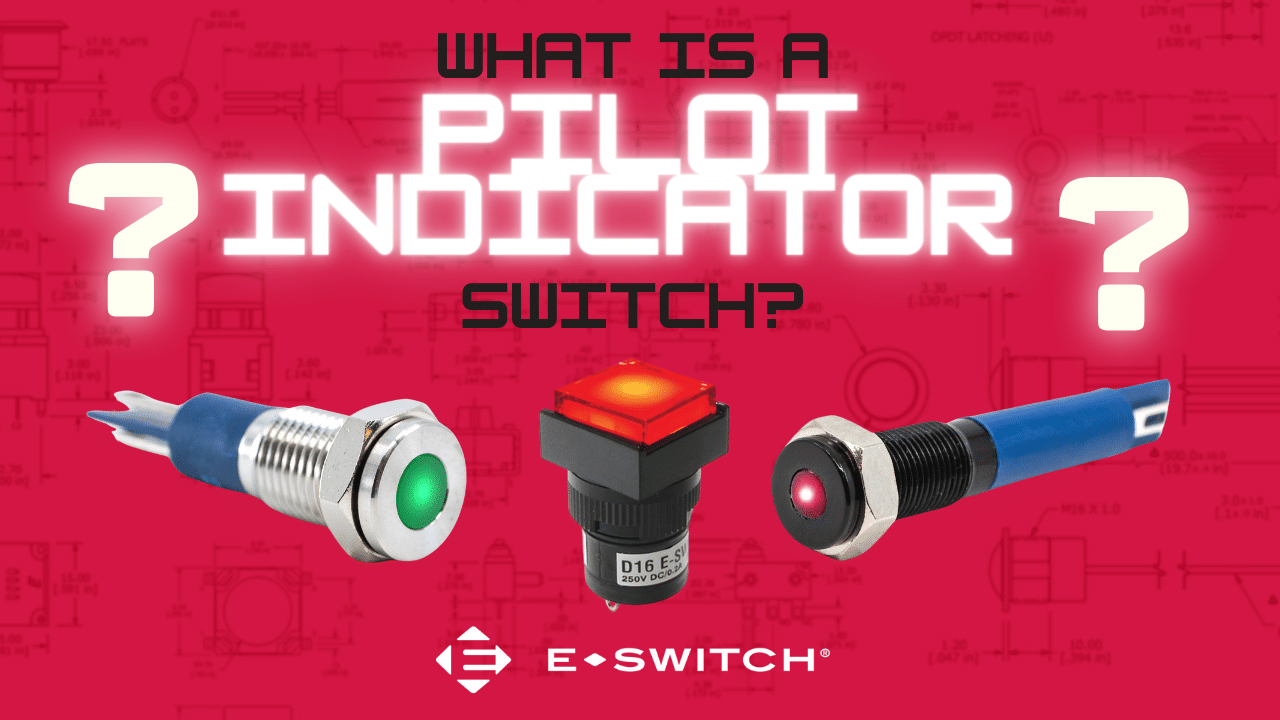What is a Pilot Light Switch?
A pilot light switch is an electrical switch that includes a small indicator light. This light illuminates when the circuit is closed and the switch is in the “on” position. The pilot light serves as an indicator to show whether the connected load (such as a light fixture or other appliances) is powered on or off. These switches are designed to enhance safety and convenience by providing a visual indication of the circuit status. Whether you’re illuminating a dark hallway or ensuring that outdoor lights are on, a pilot light switch can be a practical addition to any electrical setup.
How Does the Pilot Lamp Indicator Work?

A pilot lamp indicator switch typically consists of a switch and a small indicator lamp, often an LED. Here’s how it generally works.
#1. Switch Mechanism: The switch itself operates just like a regular switch, allowing you to turn a circuit on or off by physically toggling it.
#2. Indicator Lamp Circuit: Inside the switch, there’s a circuit dedicated to powering the indicator lamp. This circuit is usually separate from the main circuit controlled by the switch.
#3. Wiring: When you connect the switch to a power source and a load (like a light or an appliance), electricity flows through the switch. Additionally, a small amount of power is directed to the indicator lamp circuit.
#4. Indicator Activation: When you toggle the switch to turn the circuit on, electricity flows through the indicator lamp circuit as well. This causes the indicator lamp to light up, indicating that the switch is in the “on” position and the connected device is receiving power.
#5. Indicator Deactivation: When you toggle the switch to turn the circuit off, the electricity flow to the indicator lamp circuit is cut off, and the indicator lamp turns off, indicating that the switch is in the “off” position and the connected device is not receiving power.
What Are Pilot Light Indicator Switches Used For?
Pilot light indicator switches offer a simple yet effective way to enhance safety, convenience and energy efficiency in various electrical systems and environments. They’re used for the following:
Status Indication: The primary function of a pilot light indicator switch is to provide a visual indication of the status of the connected circuit. This helps users quickly determine whether the circuit is on or off without needing to physically check the device or appliance.
Safety: In environments where it’s critical to know if a circuit is energized or de-energized for safety reasons, such as in industrial settings or with machinery, pilot light indicator switches offer a clear visual cue to operators.
Convenience: In low-light conditions or areas where visibility may be limited, such as basements, attics or utility rooms, pilot light indicator switches make it easier to locate and operate switches.
Energy Efficiency: Pilot light indicator switches can help promote energy efficiency by reminding users to turn off lights or appliances when they’re not in use. The illuminated indicator serves as a visual reminder that the circuit is still active.
Diagnostic Tool: In some cases, the pilot light can also serve as a diagnostic tool. If the indicator light fails to illuminate when the switch is turned on, it can signal a problem with the switch or the circuit, prompting further investigation and maintenance.
Pros & Cons
Pros
- Visual Indicator: The primary advantage is their ability to provide a clear visual indication of the status of the connected circuit. This makes it easy for users to see whether the circuit is on or off at a glance.
- Safety Enhancement: In environments where safety is a concern, such as industrial settings or around machinery, these switches can improve safety by providing a visual cue of energized circuits, helping prevent accidental shocks or injuries.
- Convenience: They’re convenient, especially in low-light conditions or when visibility is limited. They make it easier for users to locate and operate switches, even in dark environments.
- Energy Efficiency: By serving as a reminder to turn off lights or appliances when they’re not in use, they can promote energy efficiency, helping users reduce their energy consumption and lower utility bills.
- Diagnostic Tool: In some cases, the light can serve as a diagnostic tool, signaling potential issues with the switch or circuit if it fails to illuminate when the switch is turned on.
Cons
- Power Consumption: These switches consume a small amount of electricity to power the indicator light, which can contribute to energy consumption over time.
- Complexity: These switches are slightly more complex than standard switches due to the additional wiring and components required for the indicator light.
- Cost: They’re typically more expensive than standard switches due to the added features and components.
- Potential for Failure: Like any electronic component, the indicator light in a pilot light indicator switch can fail over time, necessitating replacement or repair.
- Aesthetics: Some users may find the illuminated indicator light distracting or undesirable from an aesthetic standpoint, particularly in residential or decorative settings.
E-Switch Pilot Light Indicator Products
PVL Series Sealed Pilot Lamp Indicator

The PVL Series pilot lamp indicator offers tamper resistant properties without the actuation function. This anti-vandal indicator provides multiple panel cutout sizes, ranging from 6mm to 19mm in diameter. Body finish options include stainless steel or black. The PVL Series offers two termination options: solder lugs or attached wire leads that are 150mm long. Custom wire length is available upon request. The lens colors include red, green or blue. There are multiple illumination voltage options to choose from as well.
L16 Series Illuminated Pilot Indicator

L16 Series illuminated pilot indicators are panel mountable and come with square, rectangle or round pushbutton heads. Neon, incandescent and LED lamps are available, and lamp colors include red, green, yellow or none.
